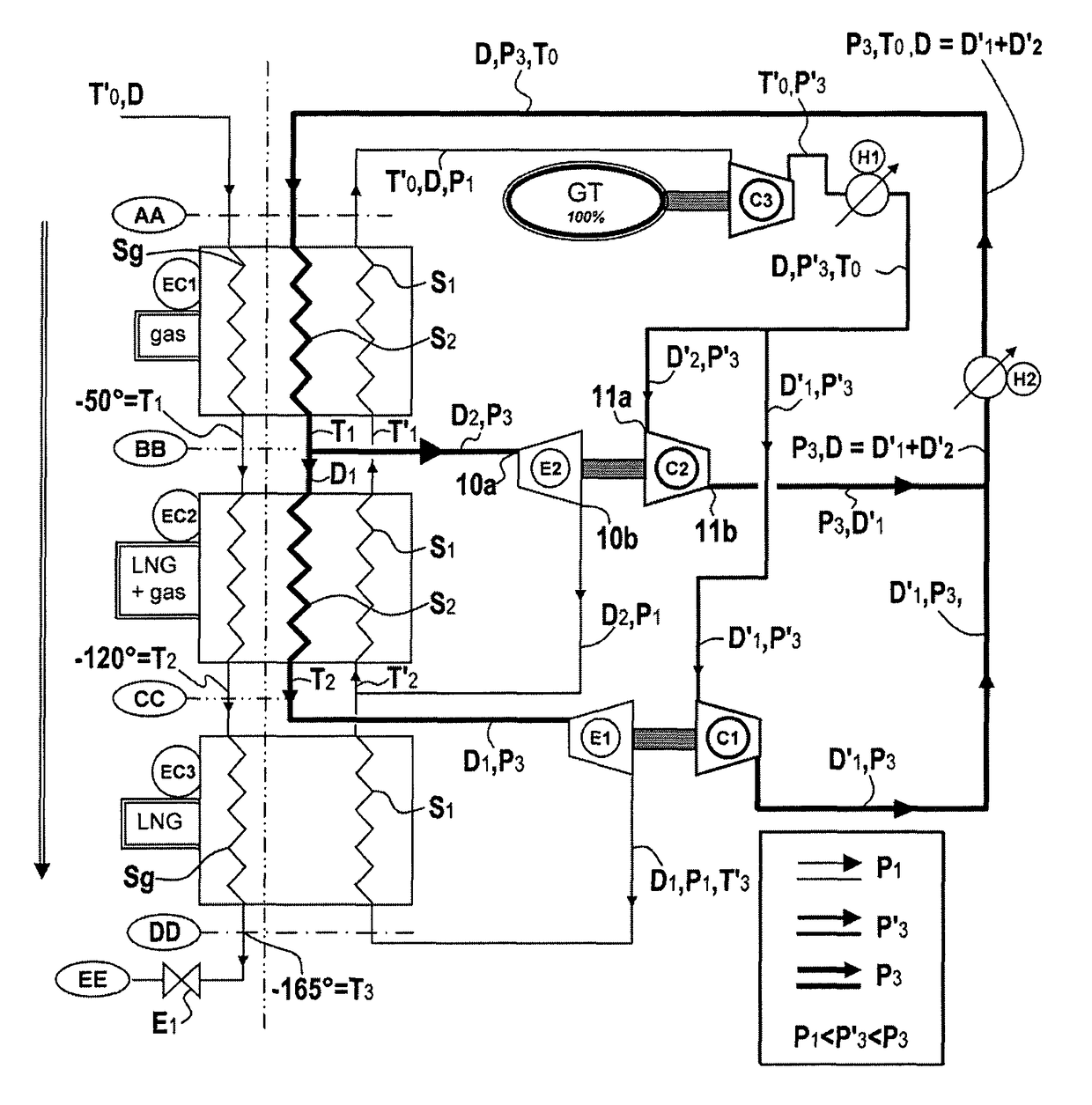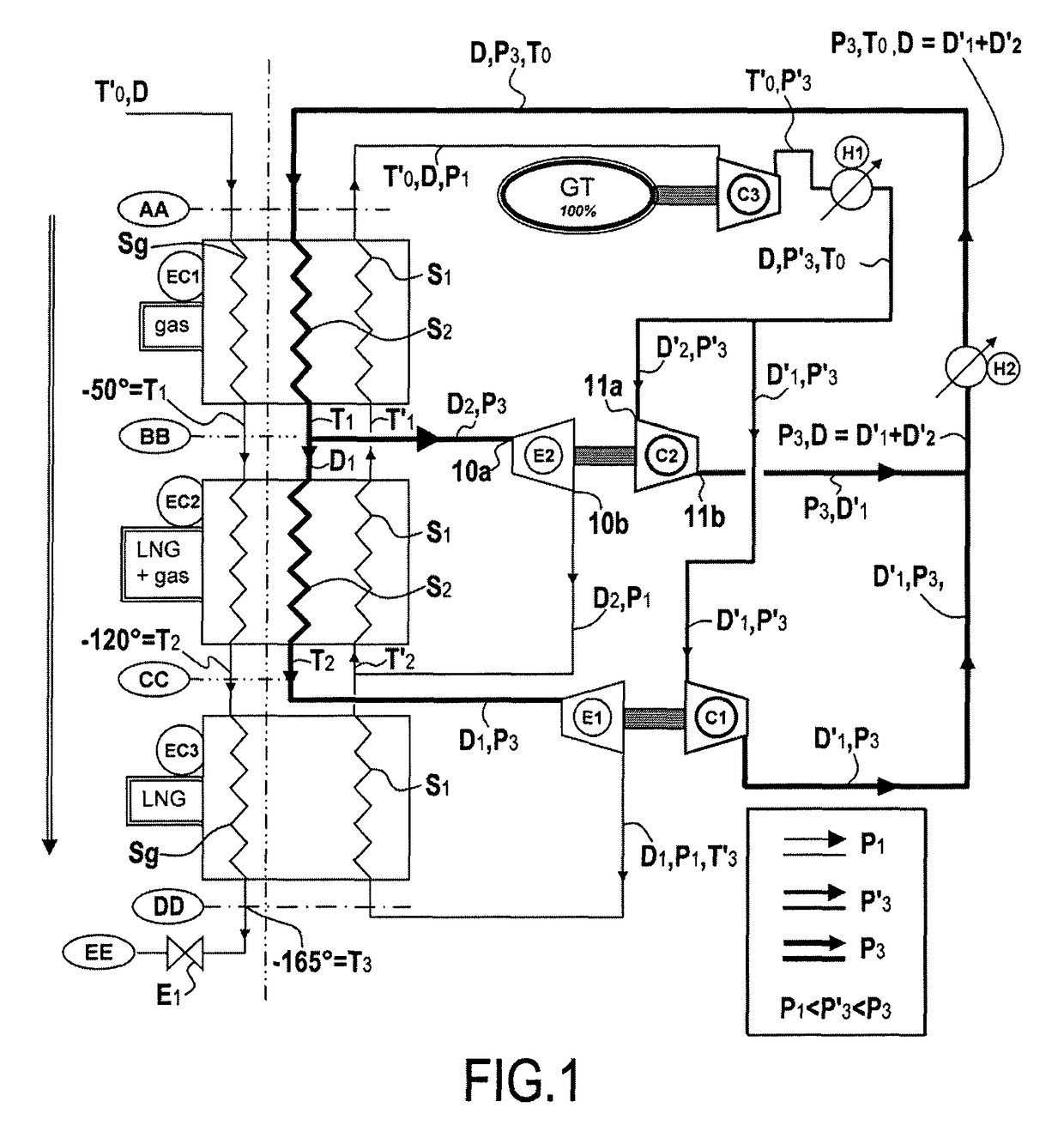Method for liquefying natural gas with a mixture of coolant gas
a technology of coolant gas and natural gas, which is applied in the direction of lighting and heating apparatus, refrigeration machines, solidification, etc., can solve the problems of large equipment requirements, large footprint, and dangerous gases, and achieve the effects of reducing the total energy consumed by the process, and increasing the transfer of hea
- Summary
- Abstract
- Description
- Claims
- Application Information
AI Technical Summary
Benefits of technology
Problems solved by technology
Method used
Image
Examples
Embodiment Construction
[0133]FIG. 1 is a process flow diagram (PFD) for the standard double loop process without phase change using nitrogen as the refrigerant gas. The process uses compressors C1, C2, and C3, expanders E1 and E2, intermediate coolers H1 and H2, and cryogenic heat exchangers EC1, EC2, and EC3. In known manner, the heat exchangers are constituted by at least two circuits that are juxtaposed but that do not communicate with each other in terms of said fluids, the fluids flowing in said circuits exchanging heat all along their paths within such a heat exchanger. Numerous types of heat exchanger have been developed in various industries and in the context of cryogenic heat exchangers, two main types predominate: firstly coiled heat exchangers; and secondly brazed aluminum plate heat exchangers, known as “cold box” heat exchangers.
[0134]Heat exchangers of this type are known to the person skilled in the art and they are sold by the suppliers Linde (France) or Five Cyrogénie (France). Thus, all...
PUM
| Property | Measurement | Unit |
|---|---|---|
| energy | aaaaa | aaaaa |
| pressure | aaaaa | aaaaa |
| pressure | aaaaa | aaaaa |
Abstract
Description
Claims
Application Information
 Login to View More
Login to View More - R&D
- Intellectual Property
- Life Sciences
- Materials
- Tech Scout
- Unparalleled Data Quality
- Higher Quality Content
- 60% Fewer Hallucinations
Browse by: Latest US Patents, China's latest patents, Technical Efficacy Thesaurus, Application Domain, Technology Topic, Popular Technical Reports.
© 2025 PatSnap. All rights reserved.Legal|Privacy policy|Modern Slavery Act Transparency Statement|Sitemap|About US| Contact US: help@patsnap.com



